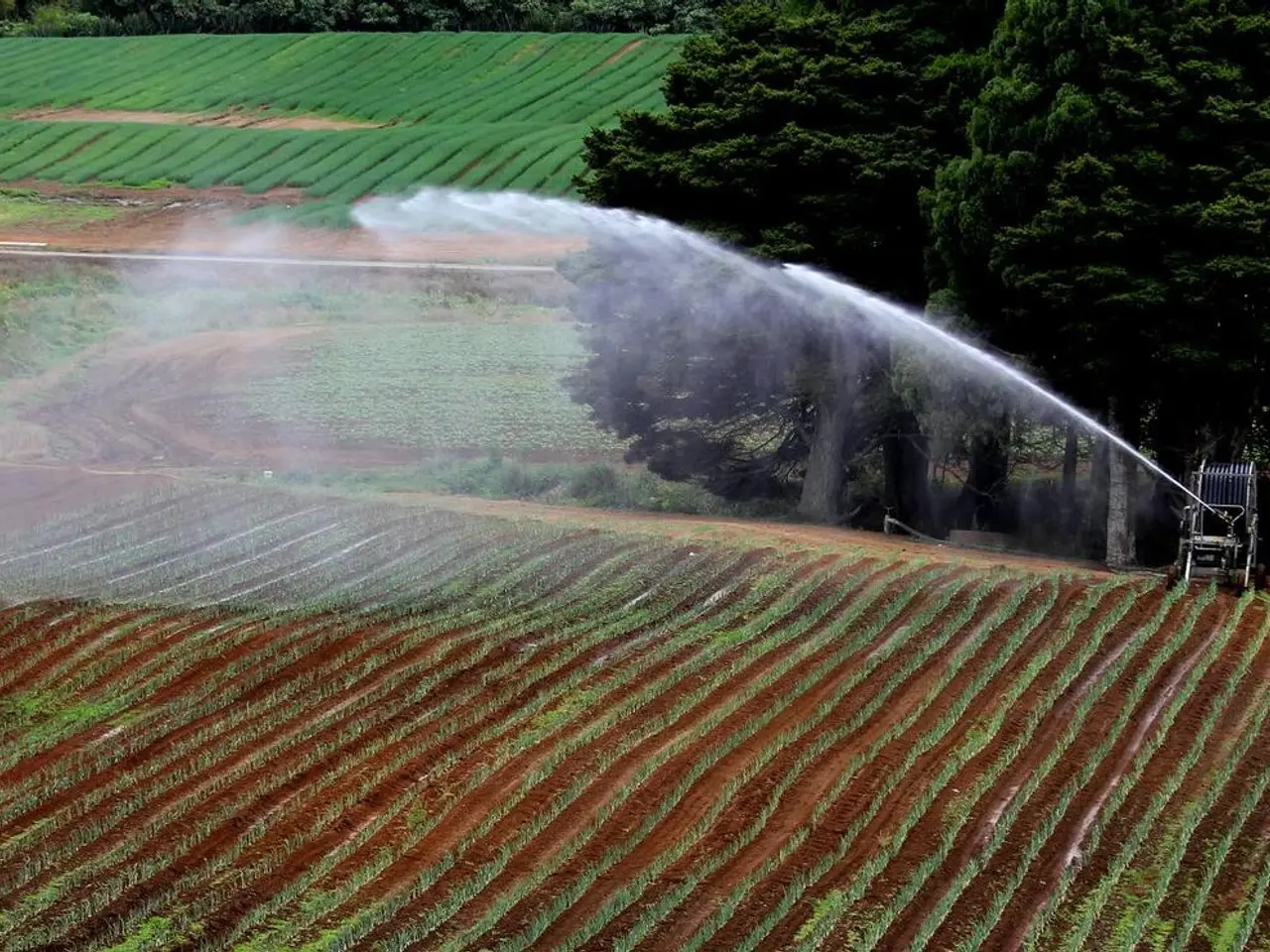Maintaining a Sanitary and Healthy Hydroponic Growth System
In the world of hydroponic farming, where plants are grown without soil in a nutrient-rich water solution, maintaining cleanliness and hygiene is paramount for the health of the crops and the success of the farm. Here are some key best practices for keeping hydroponic systems clean and hygienic.
Water Quality Management
The quality of water is crucial in hydroponic farming. To ensure optimal nutrient uptake and root health, it's essential to test the water daily for pH (ideal range 5.5–6.5), electrical conductivity (nutrient strength), temperature (65–75°F), and dissolved oxygen levels. High-quality source water, often treated with activated carbon filtration or reverse osmosis to remove chlorine and harmful minerals, should be used. Nutrient solutions should be replaced every 2–3 weeks to avoid nutrient imbalances and precipitation.
System Sanitation
Regular cleaning and disinfection of all system components, such as pipes, reservoirs, trays, and pumps, are necessary between crops. Hydrogen peroxide or approved sanitizers can be used for this purpose, ensuring that organic debris, such as dead roots, leaves, sludge, and algae, are removed frequently to avoid odor and pest attraction. UV sterilizers can also be used to control microbial populations and biofilm in recirculating systems.
Pest and Disease Prevention
Pests and diseases can quickly spread in a hydroponic system, so it's essential to implement a "prevention first" strategy. This includes keeping growing environments clean, inspecting and quarantining new plants, and maintaining proper temperature, humidity, and airflow to reduce pest habitats. Tools should be cleaned regularly, and plant debris should be removed promptly to prevent pests and fungal growth.
Environmental Controls
Maintaining balanced temperature, humidity, and airflow is crucial for discouraging pest proliferation and disease. Keeping leaves dry with good air circulation can prevent mold, while managing light settings strategically can help control certain pest species.
Additional Practices
Flushing systems completely and cleaning physically to remove biofilms and mineral deposits is also important. Employing beneficial microbes to outcompete harmful pathogens can be a preferable alternative to chemical sterilization. Routine partial water changes can help maintain microbial and nutrient balance if complete replacement is impractical.
In conclusion, consistent monitoring, removal of organic buildup, regular cleaning and disinfection of all components, and environmental control form the pillars of maintaining cleanliness and hygiene in hydroponic farming systems, ensuring plant health and optimal yields. Using plant-safe sanitizers, maintaining pH and electrical conductivity levels within the ideal range for your plants, and using screens to filter and regulate humidity levels are also essential practices in hydroponic farming.
[1] Hydroponics for the Home Grower: The Complete Guide to Growing Your Own Plants Without Soil [2] The Hydroponic Garden: The Complete Guide to Growing All Year Round [3] The Hydroponic Farming Bible: A Step-by-Step Guide to Growing Your Own Food in the City [5] Hydroponic Production of Leafy Greens: A Comprehensive Guide for Commercial Growers
- Adopting hydroponic farming in a lifestyle setting or home-and-garden environment requires a dedicated approach to cleanliness and hygiene, similar to that of professional hydroponic farms, to maintain the health of plants and ensure successful gardening.
- To develop an effective hydroponic farming setup within a home-and-garden context, one should incorporate best practices such as water quality management, system sanitation, pest and disease prevention, environmental controls, and additional practices like flushing systems and using beneficial microbes, ensuring plant health, optimal yields, and a rewarding gardening experience.



